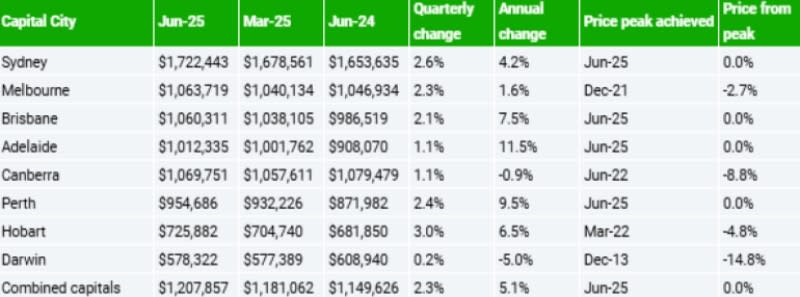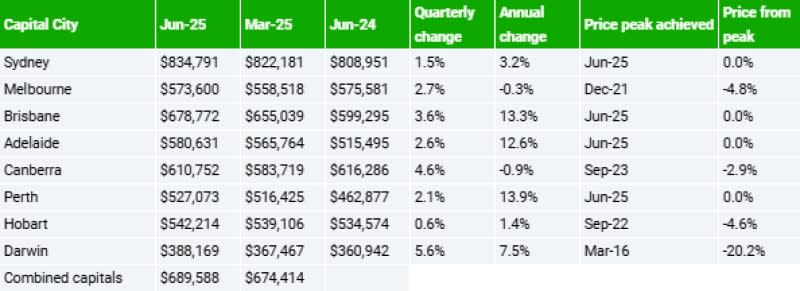House Prices Surge Across Every Australian Capital City

For the first time in four years, house prices have increased in all eight Australian capitals, according to fresh data, and rate cuts are the reason.
Domain’s June Quarter 2025 House Price Report said that the Reserve Bank of Australia move to a rate-cutting cycle had driven a sharp change in property pricing year-on-year.
The report showed that lower interest rates have also helped increase borrowing capacity and driven demand.
House prices are at record highs in Sydney, Brisbane, Perth and Adelaide while Melbourne and Hobart prices are at their highest levels for the past few years.
The median house price for Sydney increased by 2.6 per cent to $1.7 million, its strongest quarterly lift on record, while Melbourne increased by 2.3 per cent to reach $1.064 million, a three-year high.
Melbourne house prices are expected to reach record prices by mid-2026.
Growth is moderated despite new highs in Brisbane, Adelaide and Perth with Perth just $45,000 shy of the $1-million average.
But higher house prices are also pushing buyers towards apartments, and demand and affordability are also helping apartment pricing to grow.
House stratified median price changes

National apartment prices experienced the strongest quarterly growth in two years, reaching an average of $689,588, and record prices were recorded in Sydney, Brisbane, Perth and Adelaide.
Brisbane has had its longest run of apartment price growth on record while Adelaide has had nine straight quarters of growth.
Darwin and Canberra led the cities for quarterly apartment price growth—Darwin’s apartment prices grew by 5.6 per cent to $388,169 to be at an eight-year peak.
Canberra’s apartment prices increased by 4.6 per cent to $610,752, its best result in two years.
Apartment stratified median price changes

Domain research and economics chief Nicola Powell said that the cost of living and economic uncertainty was not impacting the housing market.
“But the road ahead may be uneven,” Powell said.
“Next month’s RBA decision will be one to watch—another rate cut could expand borrowing capacity, though regulators may tread carefully if investor activity accelerates.”
Supply remained a key problem, she said.
“We’re still not building fast enough to meet population growth,” Powell said. “Without a substantial boost in new housing, price pressures will remain, regardless of further rate cuts.”














